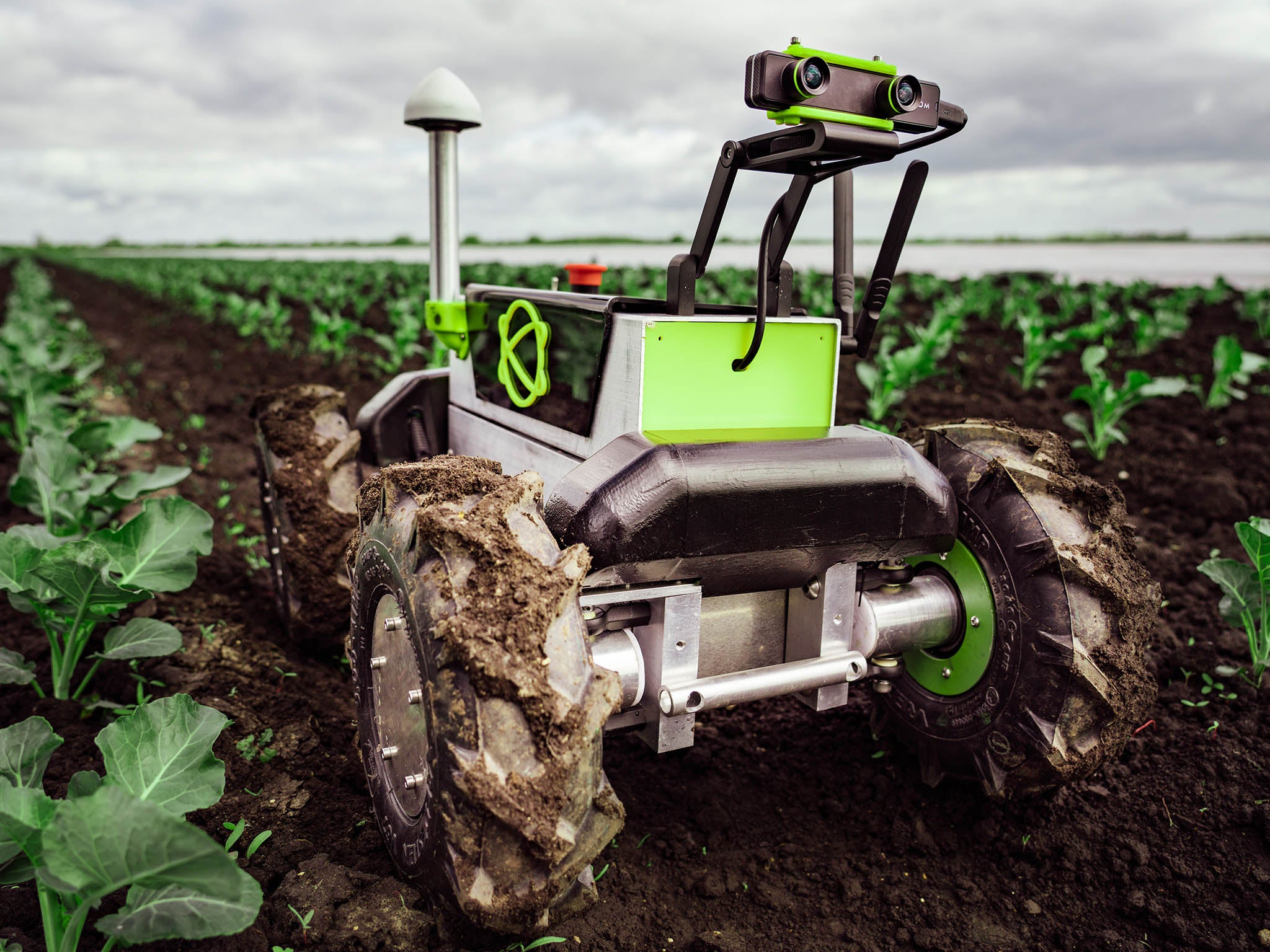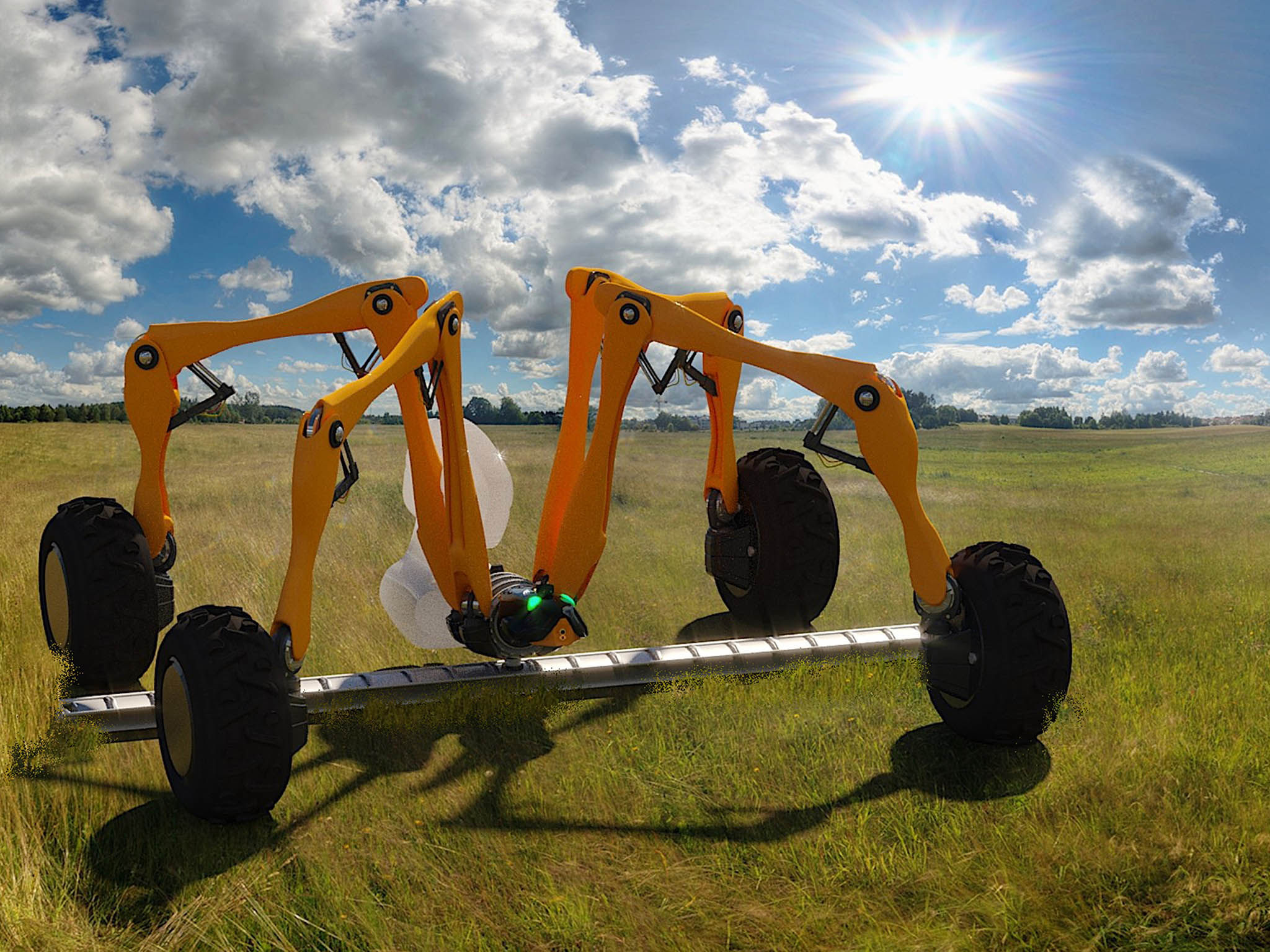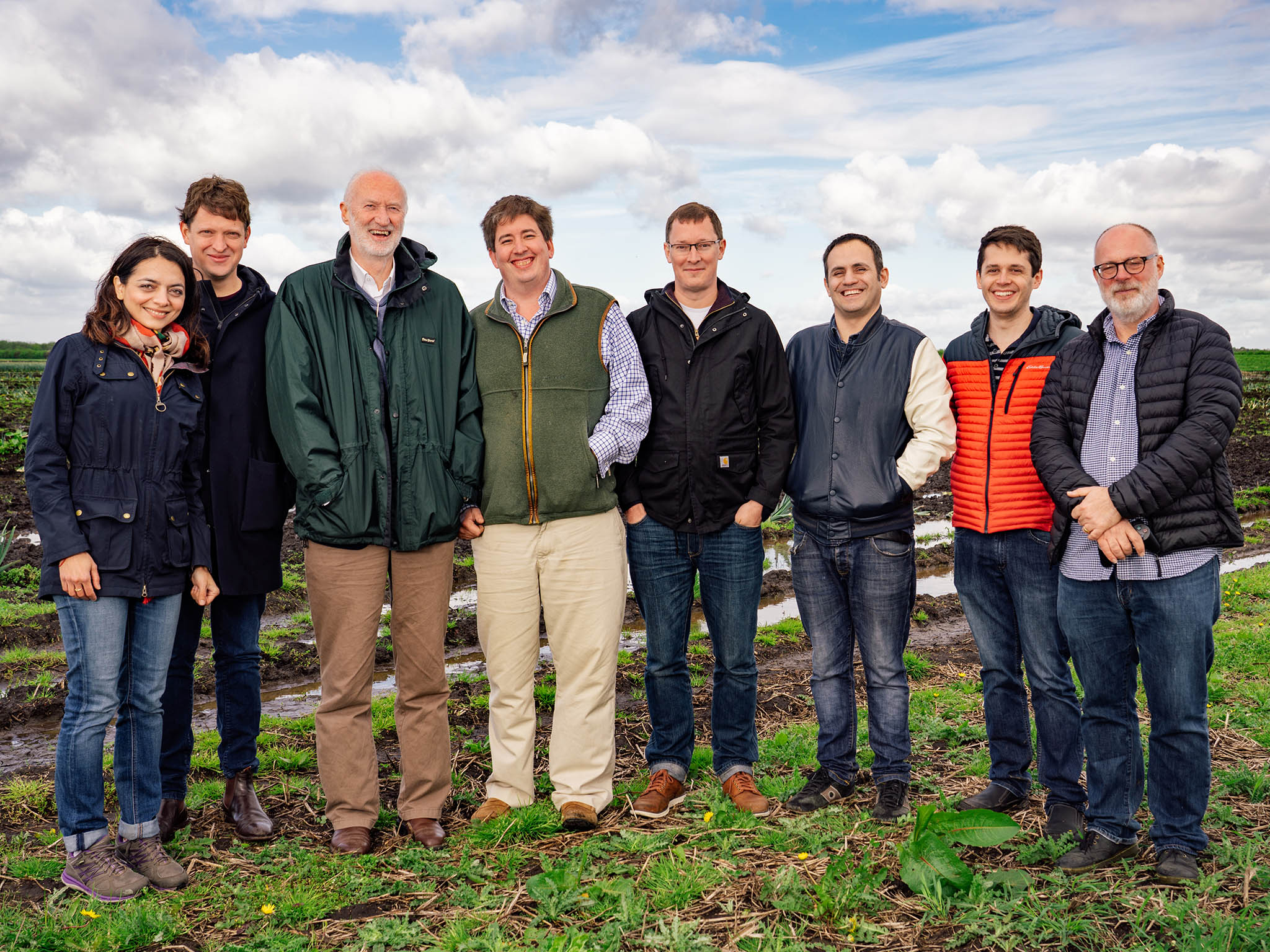How robots could be the answer to our post-Brexit farming problems
Post-Brexit, farms are expected to suffer from reduced workforces and already have problems with mass weeding and fertilisation. Could a small robot be about to replace traditional farming methods? Julia Platt Leonard finds out


Your support helps us to tell the story
From reproductive rights to climate change to Big Tech, The Independent is on the ground when the story is developing. Whether it's investigating the financials of Elon Musk's pro-Trump PAC or producing our latest documentary, 'The A Word', which shines a light on the American women fighting for reproductive rights, we know how important it is to parse out the facts from the messaging.
At such a critical moment in US history, we need reporters on the ground. Your donation allows us to keep sending journalists to speak to both sides of the story.
The Independent is trusted by Americans across the entire political spectrum. And unlike many other quality news outlets, we choose not to lock Americans out of our reporting and analysis with paywalls. We believe quality journalism should be available to everyone, paid for by those who can afford it.
Your support makes all the difference.Meet Tom, Dick and Harry, your new farm workers. Tom keeps an eye on soil fertility, crop health and pesky weeds. Meanwhile, Dick and Harry handle feeding, seeding and weeding. Back in the office, Wilma monitors their work and keeps you posted on how your crops are doing.
They’re a farmer’s dream: never sick, never on holiday and they’ll work whatever the weather. Tom, Dick and Harry also happen to be robots. Along with Wilma (the software platform ‘brains’), they’re being developed by the Small Robot Company – one of several UK businesses working on robotic solutions for farming.
For Small Robot Company co-founder Sam Watson-Jones, robots aren’t a sci-fi, attention-grabbing headline but a lifeline to farmers who are battling to stay in business.
He’s a fourth generation farmer and realised just how bad things were when he checked out the family farm records from 1990 and found out that revenue and yield hadn’t increased in 25 years. “I assumed that was an anomaly,” he says. So he graphed each year. “I worked out that basically our revenues and yields had not shifted at all over the last quarter of a century, which is obviously when you think about it, a broken business model.”
Watson-Jones realised he would instead be a last generation farmer if he didn’t come up with a different way to do business. He started by talking to other farmers who like him were facing increased operating costs and stagnant growth. It became clear that a small change – tinkering with the current model of farming – wasn’t going to be enough.
It’s a view championed by Simon Blackmore, head of engineering at Harper Adams University and director of the national centre for precision farming. He’s advised Small Robot Company and other businesses looking at how technology can improve farming. For him, nothing less than a paradigm shift is needed.
But why the need for change now? Start with Brexit. The UK relies on migrant labour as highlighted in a House of Commons paper published last year which says there are close to 30,000 permanent farm workers from other EU member states working in the UK and an additional 75,000 seasonal workers – around 98 per cent from other EU member states.

With falling unemployment rates, there is an increased demand for more, not less, migrant labour. But what happens to that labour force post Brexit? Who’s going to pick our fruit and vegetables?
Then there is the energy and cost required to keep farming running. Blackmore estimates that up to 90 per cent of the energy used in cultivation goes towards repairing damage caused by large tractors in the first place.
“Every year we’re damaging the soil, and every year, we’re repairing the soil, then we damage the soil, and repair the soil.” It’s a cycle we need to break, he says. “We need to move away from tractors and move towards ultralight machines that don’t damage the soil in the first place.”
Imagine a farm robot that’s no bigger than an office desk, is lighter and crucially creates less pressure under the tyres than tractors. Combined, that means the soil isn’t compacted and damaged.
And as our worldwide population continues to grow at a staggering rate, we need every tool we can to feed people. A United Nations reports says that the world population is at 7.6 billion and set to rise to 8.6 billion by 2030 and 9.8 billion by 2050. They estimate that we’re adding around 83 million people to the world’s population each year – 83 million hungry people.
Robots could help reduce the amount of food that is wasted, never making it out of the field. Take a crop like strawberries. “At the moment, between 20-60 per cent of the harvested crop is thrown away at the point of harvest because they’re too large, or too small, or they’re damaged,” says Blackmore. But robots can harvest selectively, leaving behind small fruit, for example, and coming back later to harvest them when they’re ready.
They could also help reduce pesticide and herbicide use. “At the moment, we go out and spray the whole field and hope to kill those weeds,” says Blackmore. “But you don’t do that in your garden. If you’ve got a weed in your garden, you don’t go out and spray the whole garden and expect the chemical to kill that one weed and leave all the rest alone.” What he and others working in the field are urging is a smarter, more targeted plant-by-plant solution. “It’s just getting the machines to go out into the field to do what you and I do in our gardens. It’s not really rocket science.”
But it’s not far off. Dr Rain Irshad is head of Autonomous Systems at the Science and Technology Facilities Council’s (STFC) Rutherford Appleton laboratory (RAL). RAL Space carries out research and technology development and has been involved in over 200 space missions.
They’re working with Agri-Rover and Earth Rover – two robotic farming projects. Agri-Rover is led by the University of Strathclyde and funded by the UK Space Agency’s International Partnerships Space Programme, with a mission to help better understand soil quality. Earth Rover, in partnership with Harper Adams University, is developing farming robots based on ExoMars Rover space technology.

Farming robots and robots used on Mars may seems literally worlds away, but Irshad says they’re not. The space rovers need to be incredibly rugged, reliable and operate in the harshest environments with dust storms, huge temperature swings and rough terrain. Suddenly a robot operating in a muddy field doesn’t seem like such a leap.
“If you could have a rover that was intelligent enough to go up and down the fields of crop and take samples in individual spots, which is the kind of thing we do in space, then you wouldn’t need to spend so much money fertilising huge swathes of areas. You could find the particular problem and you could target it in exactly the way you need it.”
Irshad says robots can answer questions that are key to any farmer. Are the crops healthy? Where is the problem? Is it due to pests or nutrients or the amount of water it’s getting? “And they can do all of that without actually touching the crop,” she adds.
Currently they’re testing robots in China. Irshad says it’s not only getting the robot right but also the interface for the farmers. “You don’t need to have a degree in IT to be able to programme and use these things.” Her goal is a simple system that’s easy to use. “That means that for the farmer, all he has to do is look at a screen, and say ‘that spot there, that’s where my problem is.’”
Selling farmers on the benefits of robotic farming is a challenge but Watson-Jones says not as big as you might imagine. “Everyone had a story about being burnt in some way, so they’d invested in new technology too quickly – more quickly than it was ready – and they didn’t want to invest huge sums of money in this nascent technology when they knew they could be sitting with a robot on their hands that was obsolete after 18 months.”
Watson-Jones says they’ll address these concerns when their robots are ready for market, by leasing them on a per hectare basis, so farmers are buying a service rather than another piece of equipment. “If they like what we do, if it works, then they expand their use of our service the following year. If they don’t they’ve got their old tractor ready to pull out.” But no one involved in the future of robotic farming thinks that is going to happen. Tom, Dick, and Harry are here to stay.
Join our commenting forum
Join thought-provoking conversations, follow other Independent readers and see their replies
Comments